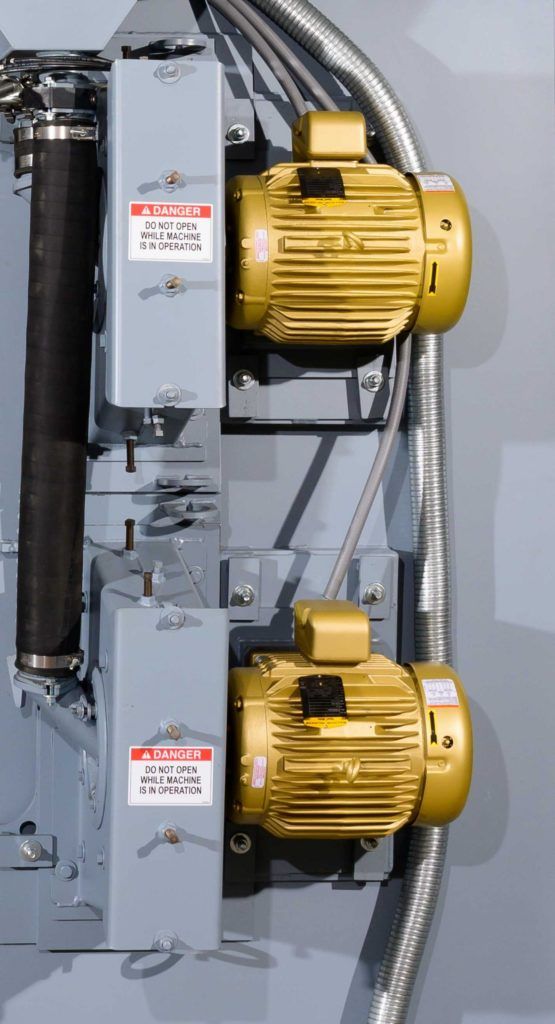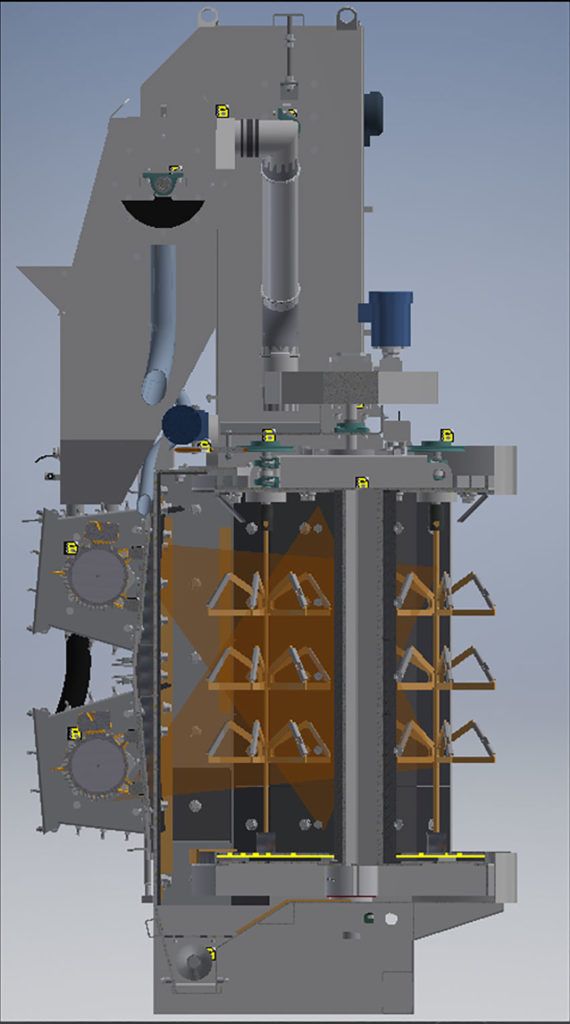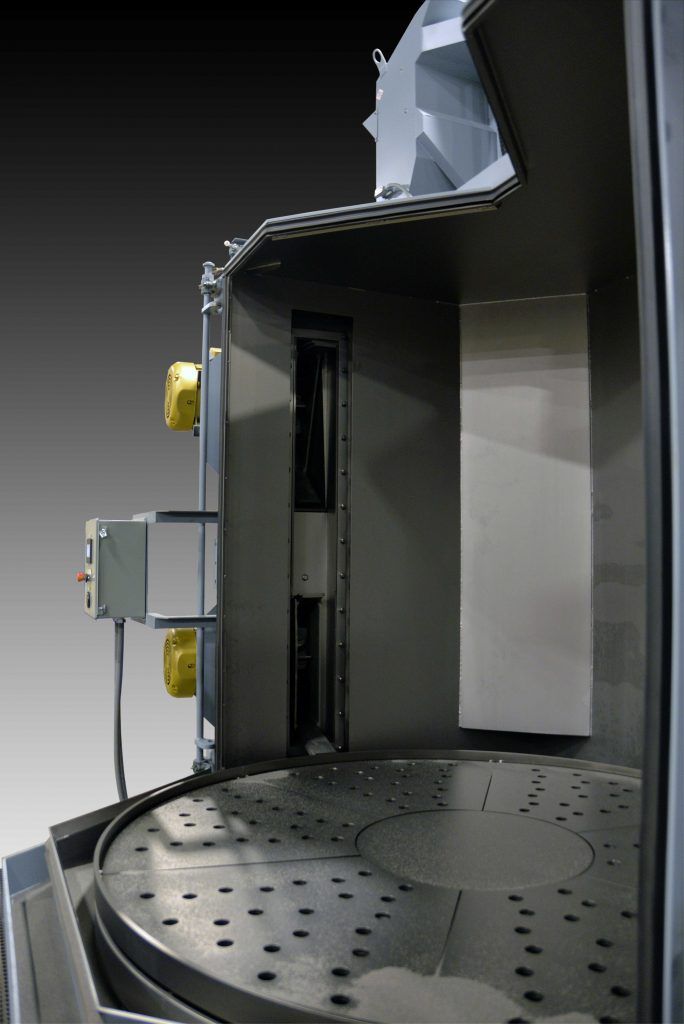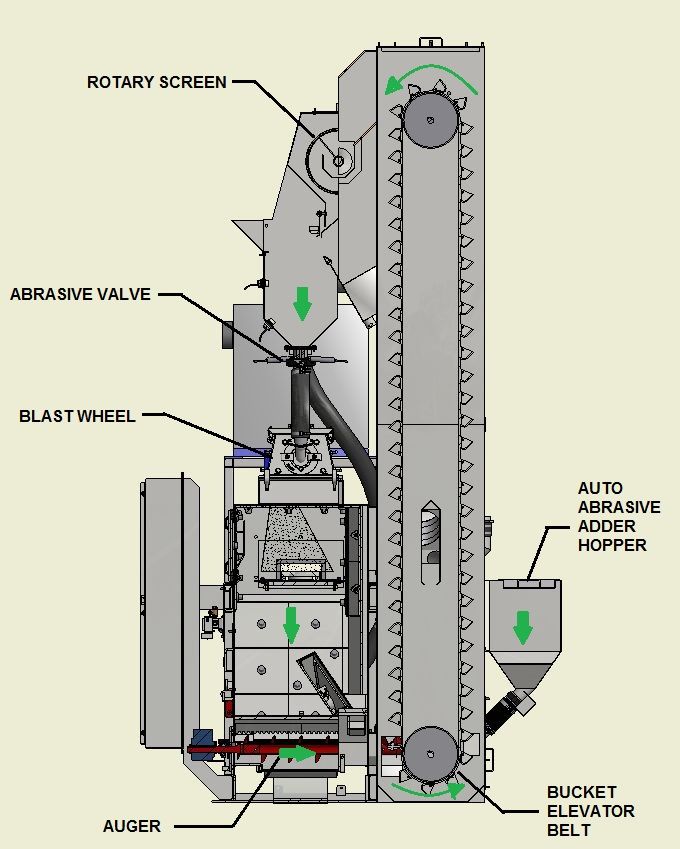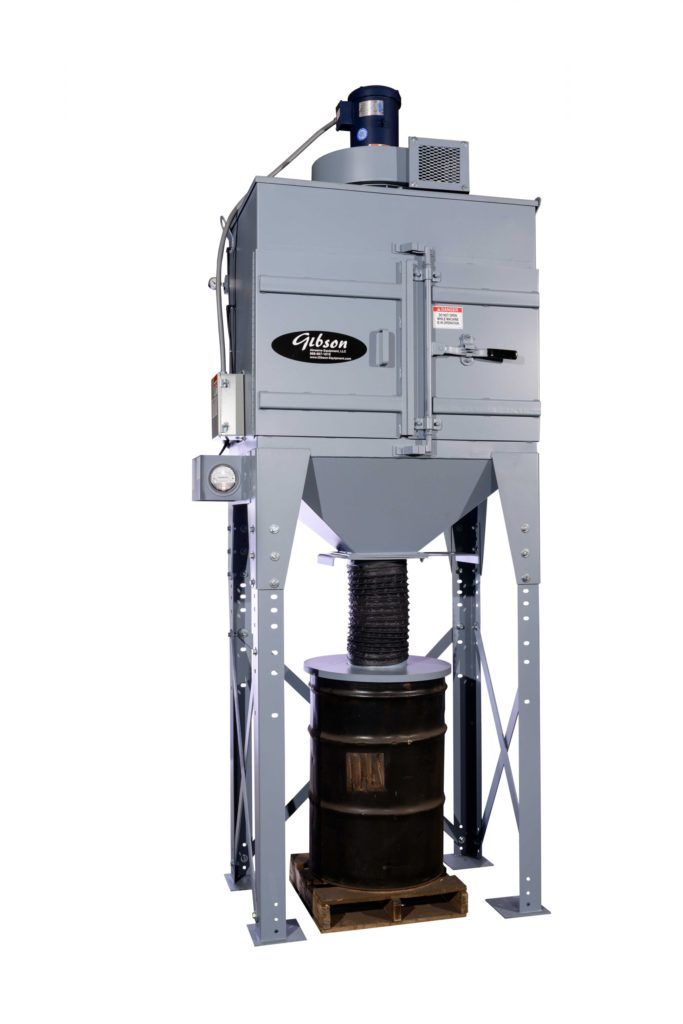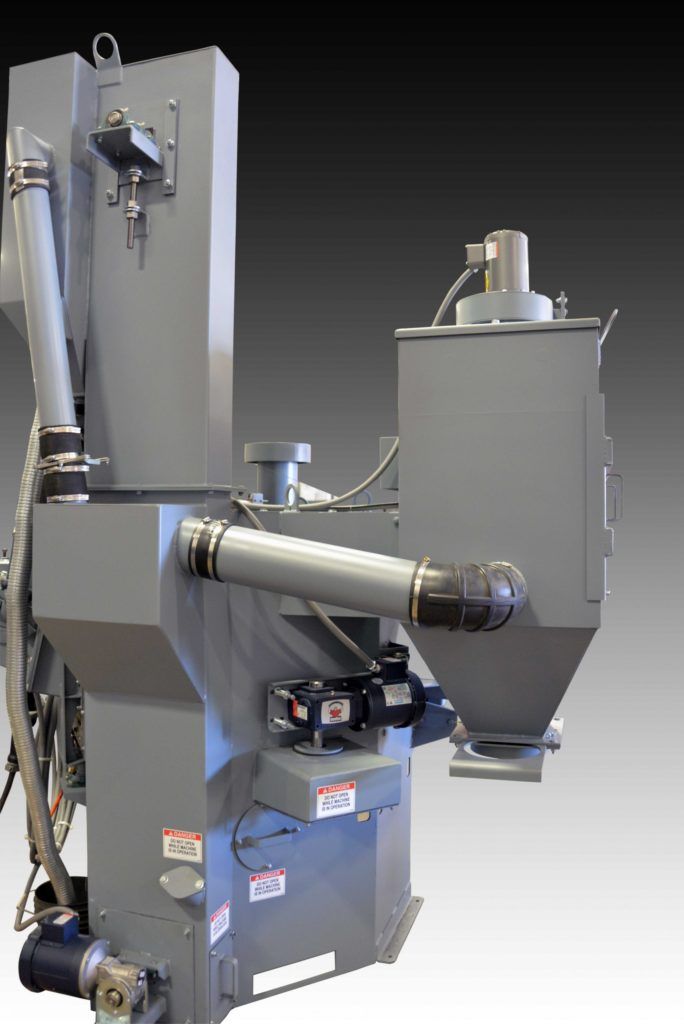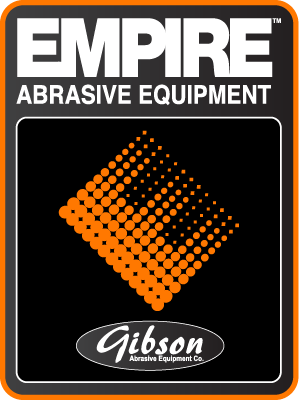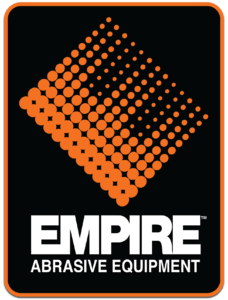Purchasing a Gibson blast cleaning system can be significant investment, which is why regularly maintaining your system is a good idea. Regular maintenance will not only help the daily performance of the system but it will also prolong the life giving you many years of blast cleaning.
Break the system down into (8) main components for maintenance purposes.
1) Blast Wheel(s)- The wheel(s) propels or throws the chosen abrasive media.
- Check major components for wear. (Blades, Impeller, Control Cage, & Liners)
- Check and adjust the blast pattern
Pro Tip: When doing a blast wheel tune-up mark the control cage location on the housing. This will make checking and adjusting the blast pattern much easier.
2) Work Handling system– depending on the design type of machine this might be rubber belt, fixture(s), rotary table(s), rollers, or a manganese belt conveyor.
- Check for wear and replace as necessary.
3) Blast Chamber- This is the main cabinet or chamber that contains the blast operation.
- Check cabinet and liners for wear.
- Check and replace door seals and cabinet slots as necessary.
Pro Tip: Many liners used in Gibson blast systems are universal. Some areas might show more wear than others. This can depend on the blast pattern and parts being blasted. Swap worn liners with liners that are showing little to no wear. This will save you time and money!
4) Electrical System- The wiring, controls, and motors to power and safely operate the system. Verify all safety switches and light curtains are working properly.
- Verify the control cabinet is dust tight and clean as necessary.
- Check all motor amps during operation.
5) Reclaim System- Used to transfer the abrasive mix back to the storage hopper.
- Check augers and bearings for wear.
- Check elevator belt and buckets for wear.
- Check elevator belt tension
Pro Tip: When replacing the elevator belt, it is good to consider replacing the bearings, pulleys, and shafts.
6) Separation System- The method that the machine has to remove contaminate waste, broken down abrasive, or dust from the reusable abrasive.
7) Abrasive Storage System- The storage hopper effectively provides consistent media to the blast wheel(s).
- Check the hopper for leaks and wear spots.
- Check for obstructions to the abrasive flow.
Pro Tip: In humid climates abrasive can begin to oxidize causing issues with abrasive flow.
8) Ventilation System- The dust collection system provides negative pressure to the blast system to ensure dust free operation as well as performs the pneumatic separation of the abrasive mix.
- Manually pulse each solenoid valve, ensuring proper function.
- Verify the system is getting the proper air pressure in the reservoir tube.
- Check the differential pressure on the provided gauge.
- Routinely inspect dust pipes to prevent clogs.
- Verify proper function of the timer board.
Pro Tip: Tune-up kits are available for the solenoid valves; this is an easy addition to every couple filter changes.
What is customer service going to need from you? Your serial number!
Don’t have the time or staff for maintaining your equipment? Inquire about Gibson’s service team and regular PM packages!

